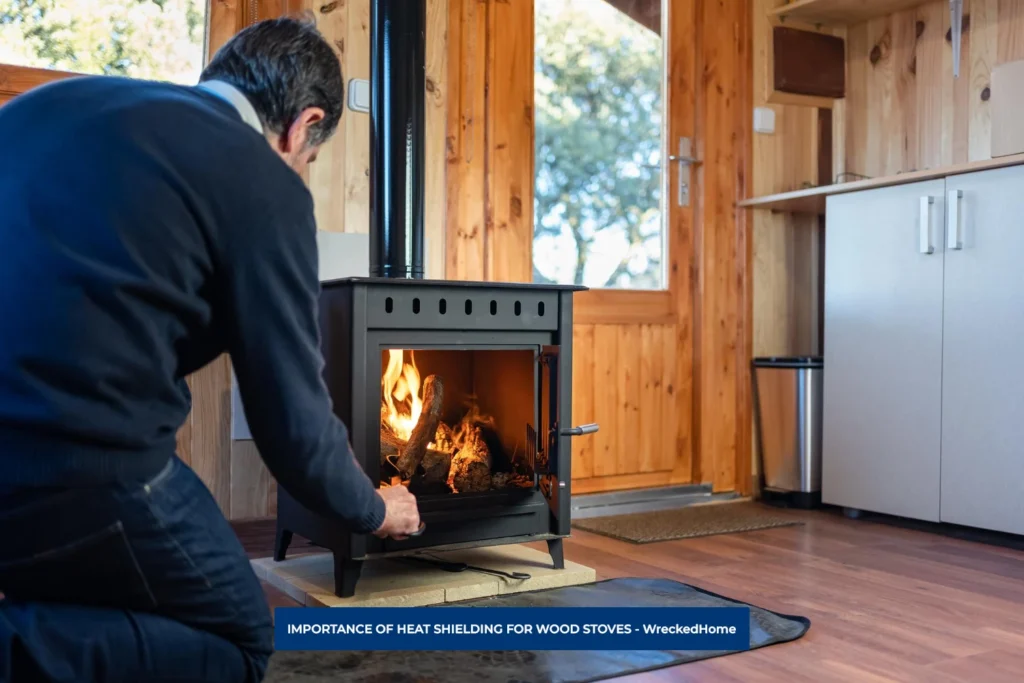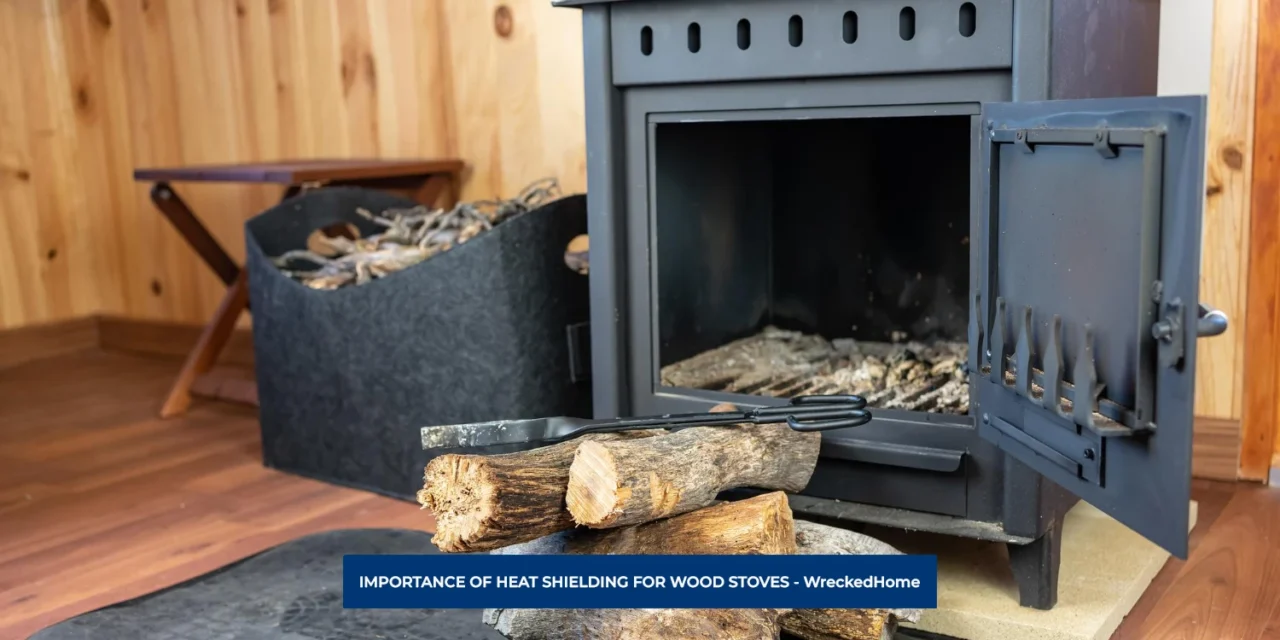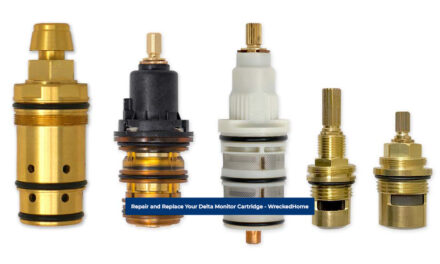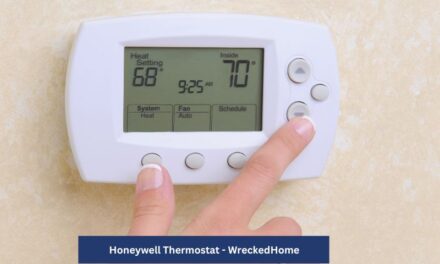In the world of heat shielding for wood stoves, safety and efficiency is paramount. Therefore, it’s necessary to choose materials that take comfort and caution into consideration. A wood stove’s enchanting flames don’t just produce warmth. They also produce a large amount of heat that can pose risks.
Understanding the importance of heat shielding for wood stoves is important for fire prevention and structural integrity. The efficacy of heat shielding lies not just in its presence but the diverse array of materials available, each with its unique properties. These materials have their own respective impact on thermal conductivity, durability, and cost-effectiveness.
With the proper selection and installation of these materials, you can seamlessly ensure your wood stove’s performance. In this guide, we will discuss how heat shielding is important. As we are doing that, you will learn the different materials that you can use for the heat shielding for wood stoves. The main focus is that you choose materials that ensure your safety as well as efficiency. Hopefully, you will be able to find the perfect materials for your project after reading this article. Let’s get started!
- Importance of Heat Shielding For Wood Stoves
- Types of Wood Stove Heat Shields
- 1. Wood Stove Wall Shield (Heat Shielding For Wood Stoves):
- 2. Stove Heat Shield (Heat Shielding For Wood Stoves):
- 3. Wood Stove Wall Protectors (Heat Shielding For Wood Stoves):
- 4. Decorative Heat Shield for Wood Stove (Heat Shielding For Wood Stoves):
- 5. DIY Heat Shield for Wood Stove (Heat Shielding For Wood Stoves):
- 6. Wood Burning Stove Heat Shield (Heat Shielding For Wood Stoves):
- Installation and Design Considerations
- Conclusion
- FAQs
Importance of Heat Shielding For Wood Stoves

Wood burning stoves are great for providing heat in your home. However, they put you in direct contact with fire. This is where the importance of the heat shield comes into play. We explain how it works to protect you from fire below.
Stove and Flue Temperatures:
A fundamental consideration is the intense heat generated that produces flames to the wood-burning stove and its flue pipe. While it may seem apparent to seasoned stove users, a stove flue pipe can reach temperatures ranging between 302 and 392 degrees Fahrenheit. The temperatures can increase significantly in more vigorous burning sessions.
To avoid any mishap, it is necessary to have a safe distance between the stove and its flue pipe avoiding any combustible materials. Without proper shielding methods, there are potential risks in the installation of your heat shielding for wood stoves.
Pyrolysis:
Stove fitters and building regulators offer a combustible phenomenon known as pyrolysis. When combustible materials are in close proximity to a heat source, such as a wood-burning stove, it leads to cooling and heating transformation. This gradual process of pyrolysis can lead to a reduction in the auto ignition to compromise the integrity of materials over time.
What was once seemingly safe may, over months or years, become a real concern for stove safety. Combustible materials situated near a stove can occur within the structure of a wall, remaining hidden until a fire breaks out. That leads to shield any combustible materials or surfaces near the stove.
Importance of Protecting Combustible Materials
The term “combustible materials” encompasses any material that will not catch fire and will not disintegrate when exposed directly to flames. A1 fire-rated materials prevents visible damage; it is a proactive measure against potential hazards that may lurk unseen. The invisible threat of pyrolysis underscores the necessity of a heat shield which ensures the long term safety and efficiency of wood-burning stoves.
Types of Wood Stove Heat Shields

Wood-burning stoves, revered for their cozy charm and efficient heating, have a crucial line of defense against potential hazards. There are common types of wood stove heat shields, each tailored to specific needs and preferences. Let’s explore each type
1. Wood Stove Wall Shield (Heat Shielding For Wood Stoves):
A foundational player in the realm of heat shielding for wood stoves, this one acts as a protective barrier installed directly on the wall behind the stove. It consists of material like sheet metal, ceramic tiles, or fire-resistant plasterboard that creates a safe buffer zone.
There is a minimum distance of 12 inches from the stove with thickness of at least 28 gauges. This distance is a strategic measure to prevent any combustible materials with their aesthetic preferences while prioritizing safety.
2. Stove Heat Shield (Heat Shielding For Wood Stoves):
Directly addressing the heart of the heat, this heat shielding for wood stoves positions itself as a resilient barrier against the radiant heat it generates. However, the versatility of materials extends beyond sheet metal to complement the stove’s design.
The stove heat shield’s strategic placement works in effectively preventing any inadvertent damage to surrounding structures. This type of heat shield caters to both safety and style.
3. Wood Stove Wall Protectors (Heat Shielding For Wood Stoves):
Sharing common ground with the wood stove wall shield, the wood stove wall protector another type. However, the key distinction with this one lies in the scale. Wall protectors extend their reach to add a layer of defense against potential heat-related risks.
Similar to their counterparts, wood stove wall protectors are known as a fire-resistant option. This allows homeowners to tailor the protector to their specific needs.
4. Decorative Heat Shield for Wood Stove (Heat Shielding For Wood Stoves):
Elevating the concept of protection like an art form, this shield offers a fusion of functionality and aesthetics. Crafted from materials such as copper, brass, or stainless steel; it boost the overall visual appeal of the wood stove area.
While providing a vital protective layer, these shields allow homeowners to express their style, turning a safety necessity into an eye-catching feature. Along with the safety and design, it ensures that protection does not come at the expense of aesthetics.
5. DIY Heat Shield for Wood Stove (Heat Shielding For Wood Stoves):
For the hands-on enthusiast, a DIY heat shield can come from sheet metal. This type of heat shielding for wood stoves offers the flexibility of desired size and shape. It is imperative to adhere to certain guidelines that align precisely with the unique dimensions of your space.
However, the freedom of crafting must ensure the thickness of 28 gauges and a distance of at least 12 inches from the stove. These are non-negotiable standards to guarantee the shield’s ability.
6. Wood Burning Stove Heat Shield (Heat Shielding For Wood Stoves):
Tailored explicitly for the unique demands of a wood-burning stove, this option is strategically installed on the wall behind the stove to create a barrier against the formidable heat output. The choice of materials, similar to other types of heat shields, offers the essence of specialization.
In the intricate dance between functionality and style, wood stove heat shields are a commitment to safety in the face of intense heat. As homeowners seek to strike the perfect balance between warmth and protection, they offer a better forefront of the wood-burning stove experience.
Installation and Design Considerations
As you delve into the realm of wood stove heat shields, you must consider the installation steps and design considerations. This ensures not only safety but also the optimal performance of your wood-burning stove.
- Pre-Installation Assessment: Before diving into the installation process, go through the distance specifications of the chosen heat shield type. You need to focus on the wall shield, stove heat shield, or a more expansive wood stove wall protector.
- Safety First: Before initiating any installation, you must ensure it is cool. Safety is paramount, and working with a cool stove safeguards against any potential hazards.
- Clearing the Space: Create a clear workspace around the wood stove that not only streamlines the installation but also mitigates the risk of accidents during and after the process.
- Choosing the Right Material: The material of your selected heat shielding for wood stoves meets both safety standards and your aesthetic preferences. Different materials may require distinct installation methods that can craft it precisely.
- Marking and Positioning: For wall-mounted heat shields it’s essential to mark the precise location where the heat shield will be installed. Do not drill in areas that are not permitted! Pay careful attention to the guidelines provided for the specific type of heat shield you’ve chosen.
- Design Considerations: Beyond the technicalities of installation, thoughtful design considerations elevate the overall aesthetics and functionality which becomes an integral part of the overall ambiance.
- Maintenance and Inspection: Post-installation, establish a routine that ensures it remains securely in place and free from any signs of wear or damage.
- Compliance with Regulations: Before embarking on the installation process, familiarize yourself with local building codes and regulations to provide an additional layer of safety assurance.
- Seek Professional Guidance if Needed: If uncertain about any aspect of the installation process, then you must ask professional help that aligns with safety standards and regulations.
By adhering to these comprehensive installation steps and design considerations, you can enhance the visual allure of your wood-burning stove.
Conclusion
In the intricate dance between safeguarding warmth and embracing design, the installation of heat shielding for wood stoves offers a harmonious synergy between safety and style. Both come into focus. The meticulous pre-installation assessments, safety protocols, and material choices lay the groundwork for a secure testament to the commitment to safety.
The thoughtful incorporation of decorative heat shielding for wood stoves introduces the versatility of these protective barriers.
If you need help with installing a heat shield, don’t hesitate to hire a professional. Find A Pro Near You Here!
FAQs
What materials are used for heat shields for wood stoves?
Heat shields for wood stoves can be built with different materials such as sheet metal, ceramic tiles, bricks, or a combination of sheet metal with brick or tile. Additionally, prefabricated and listed clearance reduction heat shields suit both functional and aesthetic preferences.
How can you Reduce Wood Stove Clearances?
One can employ DIY heat shields constructed from sheet metal, ceramic tiles, bricks, or a combination of sheet metal with brick or tile to get the reduction in wood stove clearances.
How many layers does the heat shield consist of?
Modern heat shields differ from their predecessors and consist of three layers. These include the following: a thin sheet of aluminum or a layer of non-woven material, and a pressure-sensitive adhesive.
What is heat shield insulation?
Heat shield insulation, such as those offered by Firwin, refers to materials that create a barrier and offer heat-resistant materials. Alternatively, permanent hard, fire-resistant coatings also act as insulating components to safeguard the surrounding.





































